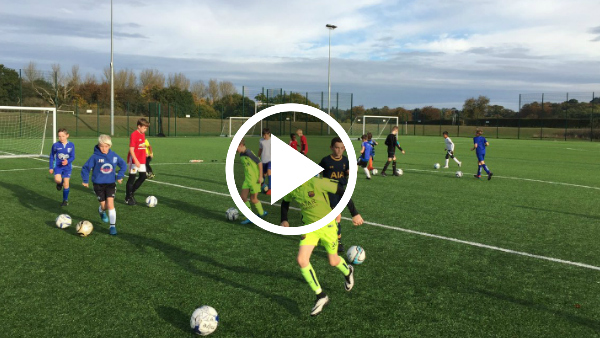With an emphasis on one-touch passing, instant decision making and defensive pressing, Barcelona’s rondo drill has become synonymous with the club.
Johan Cruyff introduced the practice to Barcelona from the famed academy of Ajax, and the likes of Pep Guardiola and Xavi Hernandez enforced the significance of the tradition to this day.
The drill is simple enough. It’s piggy in the middle played in variants of 3 versus 1, 4 versus 1, 5 versus 2 and upwards. The amount of touches the possessing team is allowed can differ based on the skill level of the players, but it’s a drill that’s beneficial at any age.
As Cruyff said, “Everything that goes on in a match, except shooting, you can do in a rondo. The competitive aspect, fighting to make space, what to do when in possession and what to do when you haven’t got the ball, how to play ‘one touch’ soccer, how to counteract the tight marking and how to win the ball back.”
The rondo teaches players how to combine and play together while naturally encouraging footballers to explore different ways of passing and receiving. No team does this better than Barcelona. Just look at their typical rondo session.
When Thomas Vermaelen moved from Arsenal, a club famed for their own possession-based style, to Barcelona even he was blown away by the emphasis put on this training drill:
“We always do it at the start of training, it doesn’t only warm you up but it’s a training session in itself, you try to keep the ball in possession and make the guys in the middle do the pressing,” said Vermaelen. “It’s a tradition. Even if we have a game in the evening, we come here in the morning and do a rondo.”
Without the ball, no team can be effective. You need the football, and you need to keep the possession of the football. It’s an extremely simple concept, and the rondo is a simple drill fit to educate players to be responsible in that practice.




